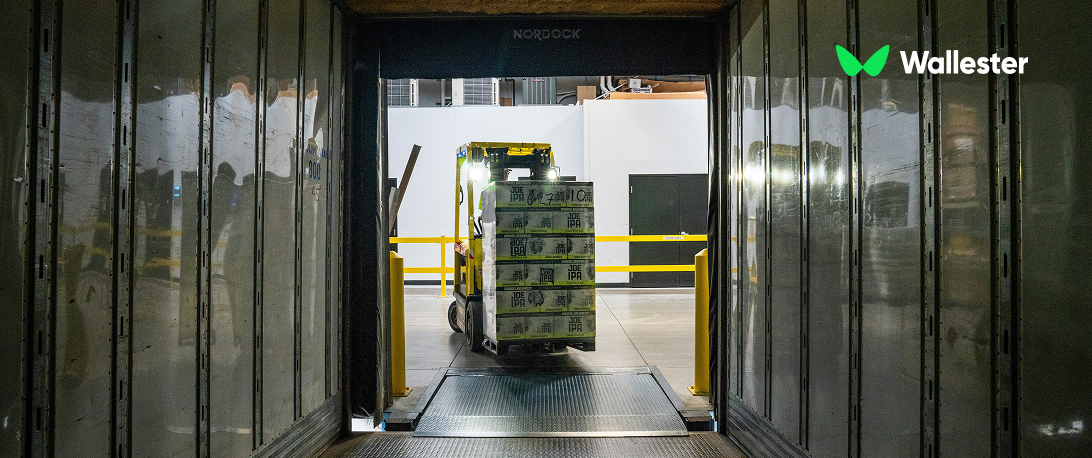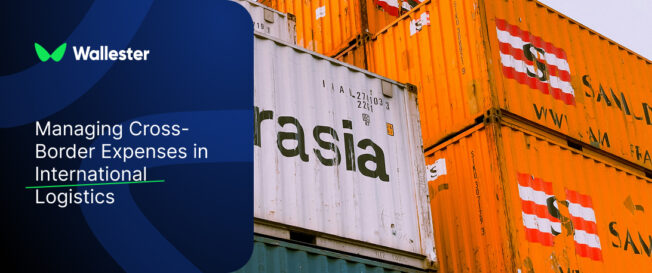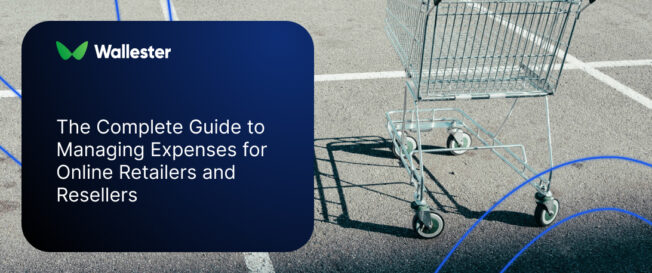Moving goods across international borders has become a daily task for thousands of companies, yet it is rarely straightforward. Cross-border logistics requires detailed planning, strong partnerships, and a clear strategy for handling costs. From customs clearance to shipping fees and currency fluctuations, businesses face a range of expenses that can influence profit margins and delivery times. Understanding how to manage these cross-border logistics expenses is an essential step for any company aiming to succeed in global trade and keep customers satisfied.
How does cross-border logistics work?
Cross-border logistics covers every stage of moving goods from one country to another. It is more complex than domestic shipping because it requires compliance with customs procedures, local laws, and international trade rules. Each shipment involves a customs clearance process that can only be completed if the business provides all the necessary documentation, including packing lists, commercial invoices, and customs declarations.
Freight forwarders, customs brokers, and logistics service providers play a very important role in supporting companies through these steps. They manage customs regulations, advise on trade agreements, and coordinate shipping routes. Local partners provide practical support when facing cultural differences, language barriers, and differing legal systems.
Moving goods is only one part of the process. Successful cross-border logistics depends on aligning supply chain management with international shipping requirements. Businesses that understand customs procedures and adjust logistics operations to local rules see smoother operations and higher efficiency across supply chains.
Further Reading: The Complete Guide to Managing Expenses for Transport & Logistics Companies
What are cross-border costs?
Cross-border logistics costs include a wide variety of expenses. Some are predictable, such as customs clearance fees or shipping expenses, while others fluctuate depending on trade agreements, exchange rates, or market changes.
Key categories include:
- Customs clearance – paying for documentation, inspections, and customs brokers who handle the customs clearance process.
- Duties and tariffs – charges applied when goods cross international borders, often influenced by trade agreements between different countries.
- Shipping fees – including freight charges, fuel surcharges, and terminal handling fees.
- Currency fluctuations – affecting operational costs, particularly when supply chains involve multiple currencies.
For companies engaged in cross-border trade or cross-border e-commerce, these costs can quickly add up. Careful planning and reliable logistics partners are essential to keep operational costs under control.
Cross-border freight shipping types
Cross-border shipping is not one-size-fits-all. Different goods, markets, and customer demands require different shipping processes.
1. Overseas freight forwarding
Overseas freight forwarding means handling shipments that travel long distances, often using a mix of air, ocean, and land transport. Freight forwarders work with logistics providers, customs brokers, and border authorities to keep operations running smoothly. They consolidate shipments, prepare commercial invoices, and take care of customs procedures.
For businesses, experienced overseas freight forwarders make a big difference. They cut delays, find efficient transportation routes, and make sure hazardous materials are shipped according to customs regulations. With e-commerce and online shopping on the rise, the ability to consolidate shipments saves on shipping expenses and keeps supply chains more cost-effective.
2. LTL/TL cross-border shipping
Less-than-truckload (LTL) and full-truckload (TL) are common in cross-border logistics, especially when goods are moved between neighbouring countries. LTL lets companies combine shipments from several customers, cutting logistics costs. TL is used for larger consignments where one truck carries goods across international borders.
LTL lowers carbon emissions by using fewer vehicles for smaller loads, though it needs careful planning to avoid delays linked to customs procedures. TL offers more predictable delivery times and is often chosen for high-value shipments that cannot risk damage or setbacks. Both models remain central to cross-border logistics and serve different supply chain needs.
3. Freight by air and ocean
Air and ocean freight dominate international shipping. Air freight is fast and provides timely deliveries for high-value or perishable goods. It supports customer satisfaction by keeping delivery times short, but it increases shipping expenses significantly. Ocean freight, meanwhile, is cost-effective for large or heavy goods, though slower.
Many logistics providers combine air and ocean freight to balance costs and speed. This hybrid model is especially useful when supply chains face disruptions, allowing companies to reroute goods quickly without excessive expenditures. In global logistics, the choice between air and ocean often comes down to the trade-off between delivery times and operational costs.
Why managing cross-border expenses matters
In global trade, cross-border logistics expenses can make or break profit margins. If poorly managed, they lead to customs clearance delays, supply chain disruptions, and unhappy customers. For businesses entering new markets or handling cross-border e-commerce, the impact of mismanaged costs can be severe.
Controlling expenses in cross-border logistics helps businesses:
- Maintain profit margins by reducing unnecessary expenditures.
- Provide timely deliveries that boost customer satisfaction.
- Adapt to market changes and avoid costly delays.
- Introduce greener logistics practices that support environmental sustainability.
Managing expenses means finding the right balance between operational efficiency and financial stability. Companies that fail to keep costs under control risk losing competitiveness in international trade.
Further Reading: From Paper Receipts to Real-Time Reports: Digitising Expense Tracking in Logistics

Key challenges in managing cross-border expenses
1. Currency conversion fees
When companies trade across different countries, they deal with costs caused by currency fluctuations. Paying in several currencies brings conversion fees that push operational costs up, and profit margins can shrink if this isn’t handled properly.
Some businesses use predictive analytics to plan transport routes and time supplier payments more wisely. Others turn to virtual cards to limit the impact of exchange rates. However it’s managed, currency volatility remains a steady challenge in cross-border logistics.
2. Duties and tariffs
Duties and tariffs are a standard part of cross-border trade. Their level depends on trade agreements, the type of goods, and the customs rules of each country. When tariffs change suddenly, logistics costs rise, and businesses need to adjust fast to keep operations running smoothly.
For instance, UK companies shipping goods overseas face different tariffs depending on local laws. If customs declarations or commercial invoices aren’t updated on time, penalties can follow. Tracking duties carefully helps companies avoid extra costs.
3. Inconsistent per diem rates
Drivers crossing international borders often face different per diem rates for food, fuel, and accommodation. These variations add complexity to administration and push shipping expenses higher, creating friction between drivers and employers.
Many companies now use advanced tools to monitor per diem spending. Handling payments through logistics providers or multi-currency solutions makes the process clearer, keeps reporting consistent, and helps companies stay in control of costs.
4. Drivers spend across multiple countries
Drivers operating across international borders often spend on fuel, repairs, and daily needs in several currencies. Without the right systems, this leads to discrepancies in expense reports and difficulty in reducing costs.
Multi-currency virtual cards and predictive analytics provide solutions by simplifying expense tracking. They allow companies to see expenditures in real time and adjust operational costs accordingly.
The best ways to manage cross-border expenses efficiently
Companies looking to manage costs in cross-border logistics have several practical methods available.
- Consolidate shipments whenever possible to cut shipping fees and improve efficiency.
- Work with local partners who understand customs procedures, local laws, and cultural differences.
- Adopt advanced technologies such as predictive analytics to plan transportation routes and avoid supply chain disruptions.
- Implement sustainable practices, including green logistics, to reduce carbon emissions and lower long-term operational costs.
Careful planning, supported by logistics partners and freight forwarders, allows businesses to maintain smoother operations and achieve timely deliveries across supply chains.
Further Reading: Top Expense Policy Mistakes in Transport Companies and How to Fix Them
Technology’s impact on cross-border expense management
Managing cross-border logistics is complex, and technology now plays a big part in making it easier. Tools that track shipments, analyse routes, and handle paperwork give companies more control over their costs and operations. The following examples show where technology is making the clearest difference.
1. Supply chain visibility and real-time tracking
Technology gives companies clearer oversight of their supply chains. Real-time tracking lets logistics providers monitor goods across borders, offering more control over delivery times and logistics costs. With this visibility, businesses can react faster to disruptions and keep operations running smoothly.
2. The use of predictive analytics for route optimisation
Predictive analytics allows businesses to forecast demand, plan shipping routes, and minimise delays. By studying market patterns, companies can control fuel use, adjust shipping expenses, and respond to sudden changes. It also supports environmental sustainability by cutting carbon emissions through more efficient transportation routes.
3. Using automated documentation
Automating paperwork makes customs clearance simpler and less error-prone. Systems can instantly generate packing lists, customs declarations, and commercial invoices, helping companies stay compliant and avoid clearance delays.
Managing cross-border expenses with multi-currency virtual cards
Multi-currency virtual cards are now widely used to handle cross-border logistics expenses. They let companies pay in different countries without the usual complications of currency fluctuations and make reimbursements easier for drivers and logistics partners.
With these cards, businesses can:
- Track shipping expenses in real time.
- Avoid conversion fees that increase operational costs.
- Pay logistics providers and freight forwarders quickly, keeping operations moving.
For companies managing cross-border e-commerce and international shipping, multi-currency cards have become a key tool. They support smoother operations, faster deliveries, and clearer control over logistics costs.
The future trends in managing cross-border expenses in international logistics
Cross-border expense management is developing quickly, with several clear directions already visible:
- Greater use of advanced tools – predictive analytics, real-time tracking, and automated documentation are becoming standard for monitoring costs and avoiding delays.
- Focus on sustainability – companies are working to cut carbon emissions, adopt greener logistics methods, and handle hazardous materials more safely.
- Growth of digital payments – multi-currency virtual cards and automated systems are replacing manual expense tracking.
- Stricter compliance demands – tighter customs regulations mean businesses need faster and more accurate documentation.
- Flexibility in operations – smarter inventory management and alternative shipping routes help companies respond to market changes in global trade.
These developments point to a future where logistics is smarter, cleaner, and better controlled.
Final thoughts
Cross-border logistics expenses are not a side issue – they influence every part of international trade, from pricing and profit margins to customer satisfaction. Companies that treat expense management as part of their wider supply chain strategy are better prepared for the challenges of global trade. Customs clearance, shipping fees, duties, and currency fluctuations all add up, and handling them well makes the difference between growth and setbacks.
Strong partnerships are just as important as internal planning. Working with experienced freight forwarders, customs brokers, and logistics providers allows businesses to navigate local laws, cultural differences, and varying customs procedures more effectively. Combining this expertise with tools like predictive analytics and automated documentation helps keep supply chains reliable, even when markets change.
The future will bring tighter regulations, rising expectations for timely deliveries, and pressure to adopt greener logistics practices. Companies that invest in digital tools such as multi-currency virtual cards and real-time tracking will be better placed to control costs, cut delays, and meet sustainability goals. Clear planning, reliable partners, and smart use of technology together form a practical approach to keeping cross-border logistics expenses under control.
Improve cross-border expanse management with Wallester’s solutions
Wallester provides practical tools that simplify the financial side of cross-border logistics. Its platform combines multi-currency virtual cards, real-time expense tracking, and automated reporting, giving companies the control they need when moving goods across international borders.

With Wallester, you can:
- Issue multi-currency virtual cards for drivers, employees, or partners, making payments straightforward in different countries without worrying about conversion fees.
- Track spending instantly across all logistics operations, from fuel to customs payments, so managers always know where money is going.
- Automate documentation and reporting, reducing the time spent on manual admin and lowering the risk of customs clearance delays.
- Use predictive analytics to plan ahead, manage budgets, and keep profit margins steady even when market conditions shift.
For companies active in cross-border trade and international shipping, Wallester offers a complete way to control logistics expenses and keep supply chains reliable.Start managing cross-border expenses more effectively today – contact Wallester to learn how our solutions can support your business.



